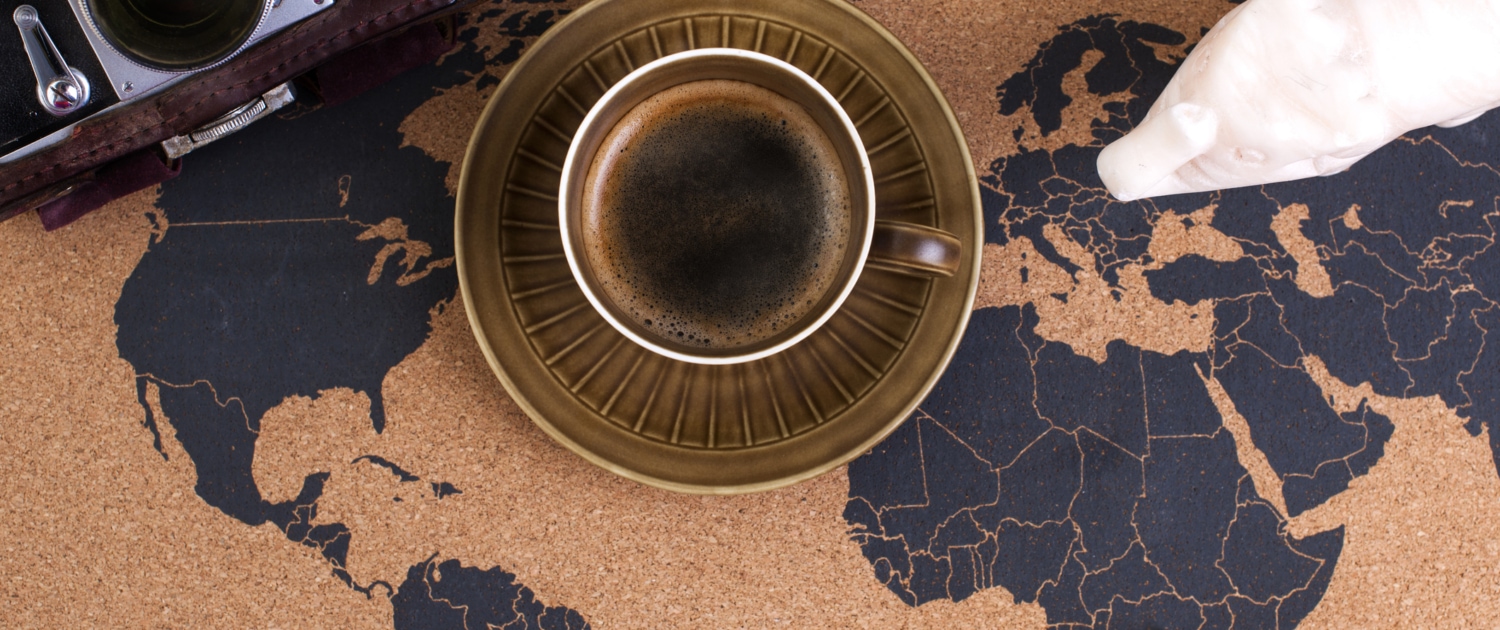8 Fascinating Facts About The History of Coffee
– ‘A Drink For The Devil’ –
Our history of coffee is vast and long.
Nowadays, you can literally buy a cup of coffee at any street corner around the world. Without a doubt, coffee has become one of the most popular beverages.
Firstly, the drink comes in a great variety of different and exciting versions. You can choose between lattes, cappuccinos, espressos and many more. The list goes on and on. And, new creative variations are entering our colorful coffee universe as we speak.
Secondly, one of coffee’s key ingredients is caffeine. On a daily basis, many coffee enthusiasts appreciate and rely on its stimulating effects, which help us getting through our days more efficiently.
Thirdly, coffee comes with a lot of great health benefits. Some people even say that it makes them happier and live longer.
However, before coffee became such a central role in all of our lives. It had to overcome a few historic obstacles and challenges itself.
This article shares 8 fascinating facts about the history of coffee.
Let’s turn back the time for a bit. And, let’s recap some interesting episodes of our own history of coffee (internal link).
As official source and inspiration, these episodes are referring to the great book by Paul Chrystal. Its name is: ‘Coffee: A Drink For the Devil’.
-
Not Men But Excited Goats Discovered it
– 8 Fascinating Facts About The History of Coffee –
There are many interesting stories when it comes to the origins of coffee.
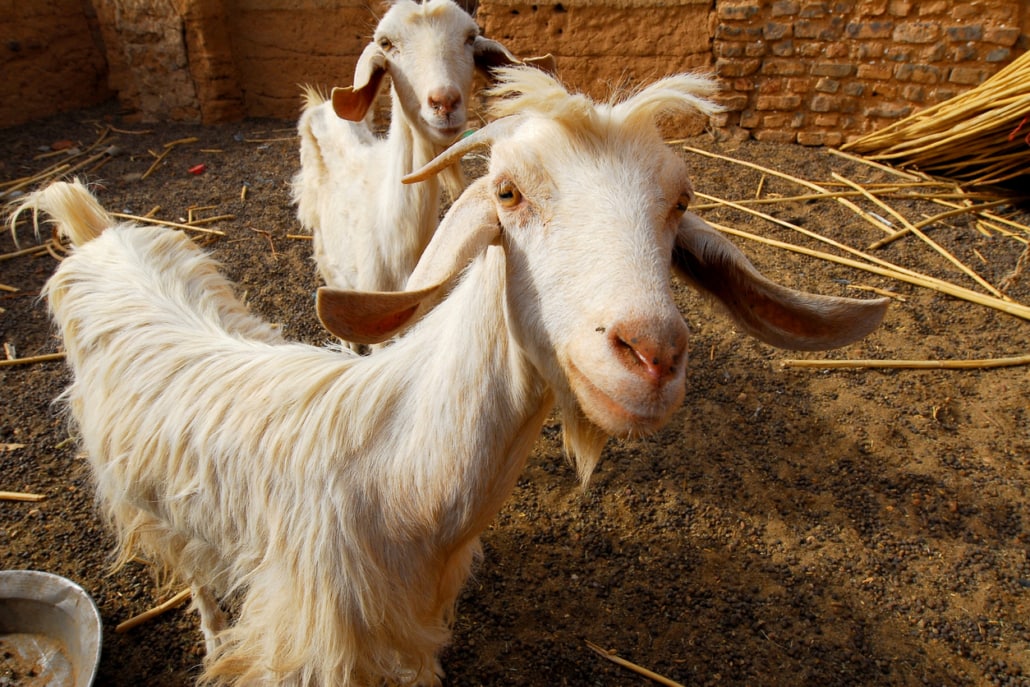
Probably, the most well-known and widely established one is about Kaldi and his dancing goats. The story goes that Kaldi was a somewhat a lonely goat herder in today’s Ethiopia back in the 9th century.
One day, while taking out his goats, he saw them being strangely being excited. It was as they were dancing around. This was the day that Kaldi witnessed and discovered the energizing and stimulating effects of coffee.
He saw his goats eating some berries from a small grown tree.
Kaldi lost no time and told the abbot of the local community about his special discovery. Furthermore, the abbot had the idea to dry and boil the berries. So, he could make a beverage out of them.
At first, he threw the berries into the fire. What happened next made the abbot even more excited. After a while, the air filled an unmistakable and very characteristic smell floating through the air. Today, we all know it as the typical aroma of coffee.
After roasting, he took the beans out of the ashes. Then, he ground them. And finally, dissolved them in hot water. The world’s first hot cup of coffee was made.
Moreover, other monks also shared his findings. Shortly after, they noticed that this empowering beverage kept them awake for many hours at a time. This was especially useful for them. Since they could study and also devote themselves to long hours of prayer.
From here, there was no turning back anymore. And, this new beverage slowly but surely conquered the entire world.
-
Coffee Was First Brewed by a Saint From Mocha
Besides the legend story of the ‘dancing goats’. There also exists a second, quite popular, origin story about coffee.
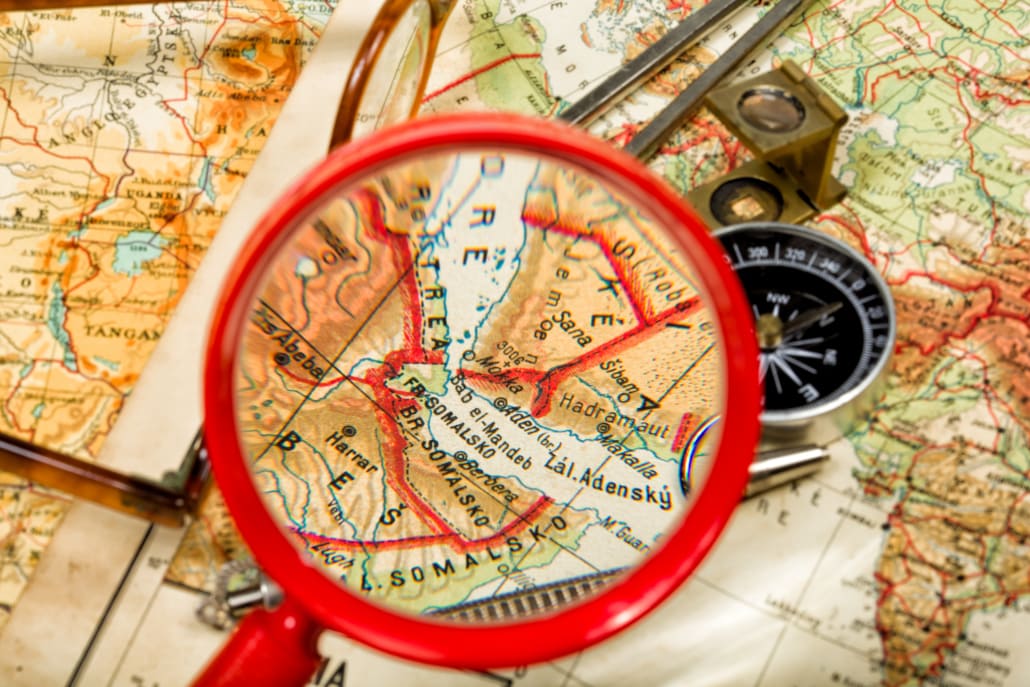
This one claims that coffee was first discovered by a Sufi sheik in today’s country of Yemen. And, his name was Omar.
While Omar was in exile from the city of Mocha. He mainly lived in a desert cave near the town of Ousab. Furthermore, Omar made his name and gained fame for his one astonishing ability. Reportedly, he was able to cure sick people through the use of prayers.
Nonetheless, he was a poor saint and struggled to survive.
So, one day, Omar had nothing else to eat but to chew on some berries. However, they tasted very bitter. Therefore, he tried to roast them. But, this only made the berries hard. Hence, he finally boiled them. As a result, he had an aromatic fragrant in a form of brown liquid.
After drinking, Omar noticed somewhat unnatural and exceptional energy. This allowed him to stay awake for many days.
Eventually, he shared his discovery with many others. Therefore, he found more and more respect among the people. After some time, he was even allowed to return home to Mocha. Here, he was elevated to the sainthood while coffee became popular all across the Arab world.
The ‘Wine of Araby’
According to similar legends, Omar may have already known coffee berries from before. Because he was a former disciple of the Yemenite Sufi mystic, called Ghothul Akbar Nooruddin Abu al-Hasan al-Shadhili.
Now, this person also has a claim of having first discovered coffee. One day, he witnessed berry-eating birds flying over his village in an unusual energetic way. After he tasted the berries himself. He also found himself unusually alert and energized.
Regardless of who may have discovered coffee or not. By the 16th century, the beverage was already popular in the regions of Persia, Egypt, Syria and Turkey.
The new ‘Wine of Araby’ further grew in its reputation by the endless streams of pilgrims visiting the holy city of Mecca from all over the Muslim world every year.
Merchants started trading coffee berries and its plants. Sometimes legally. And, sometimes rather illegally. Nonetheless, it did not take long until the popularity of coffee also further spread through the Balkans, Italy and eventually the entire rest of Europe.
Nowadays, the general belief is that the first and native coffee plants come from the regions Ethiopia, Somalia and Kenya in eastern Africa. Furthermore, the ancestors of today’s Oromo ethnic group may have discovered it first.
In addition, we have first credible evidence from the Sufi monasteries of the Yemen in southern Arabia. They wrote about drinking coffee and the general knowledge of the coffee tree.
-
Coffee Triggered a Social Revolution
– 8 Fascinating Facts About The History of Coffee –
Over the course of history, coffee became more and more essential in many people’s lives. At one point, it even forged a social revolution.
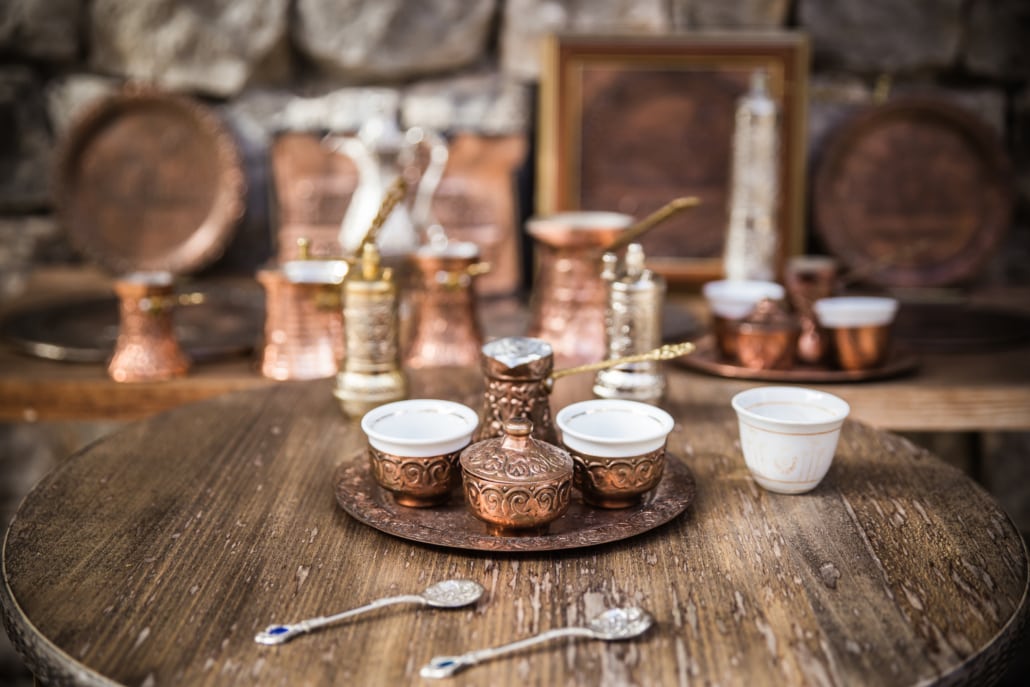
During the Middle Ages, it did not take very long until coffee became a commonly used domestic beverage in many households throughout the Middle Eastern regions.
But not only that. At the same time, many public coffee houses opened up everywhere. Traditionally, people called them qahveh khaneh. These establishments rapidly sprang up in villages, towns and cities across the Middle East and east Africa.
Not long after, these coffee houses were surely the place to be.
People met there to socialize. Basically, you were drinking stimulating coffee and had engaging conversations. Often times, there was also some entertainment. For example, these included musical performances, dances, games of chess, and others.
But, most importantly coffee houses quickly became the central point of gossip, arguments and overall lively discussions. People vividly discussed the recently breaking news of the day.
As a result, coffee houses established themselves as ‘schools of the wise’ in many regions.
A social revolution took place. Suddenly, there were places where you could find updates and information. You experienced the freedom to openly discuss these. Hence, you were able to educate yourself or share your knowledge with others.
Quite naturally, coffee houses were the place you went to. This is, if you wanted to know what was going on in the world. Coffee was not only a simple beverage anymore. It became a somewhat social institution of itself.
The energizing beverage created a link to intellectual life. Thus, coffee even became more central and essential as it had already been before.
-
Is Coffee bad and a ‘Sin’?
Yes, you heard right. There was a time when certain people believed or considered coffee to be ‘sinful’.

Historically, there are some similarities between alcohol and coffee. Both types of beverages experienced periods of prohibition. Influential people banned one or the other at some point during our history.
What were the reasons? Is coffee bad? And, is it actually a ‘sin’?
Well, coffee became famous in many regions very quickly. This also scared some people. Especially, those who maybe had to lose the most. People with influence and power felt increasing fear and suspicion.
As a result, coffee was really banned at some point.
In 1511, after a meeting in Mecca, jurists and scholars banned the act of drinking coffee. This initiative was mostly lead and enforced by the Meccan governor, Khair Beg. Apparently, coffee and its establishments presented a real threat to his power.
The beverage and the coffee houses gave opportunities to foster opposition to his rule. Coffee brought people together. Hence, it allowed people to socially discuss any of his political failings.
Therefore, coffee was associated to trigger rebellion and revolution. It became sinful, hence haram.
However, many people simply did not agree and fought against this act. For the next 13 years, the controversy over whether coffee was intoxicating or not raged on. Until 1524, when the ban was finally lifted again.
The eventual order came by the Ottoman Turkish Sultan, Selim I, himself. With Grand Mufti Mehmet Ebussuud el-Imadi issuing a so-called fatwa. It allowed people to drink coffee again.
In addition, the former governor of Mecca, Khair Beg, was executed for his troubles. Furthermore, the Sultan even went a step further. He declared coffee to be sacred.
There were a few similar bans in coffee’s history. But coffee always eventually overcame them.
-
The Devil’s Cup
– 8 Fascinating Facts About The History of Coffee –
From the Middle East, it did not take very long to further conquer new regions. Just quickly after, this new and enticing beverage also finally reached the European mainland.

First, coffee arrived in Venice. At the time, Venice is one of the major trade centers in the Mediterranean Sea.
However, not everyone welcomed this new trend with open arms. In fact, some people had various doubts about it. Same as some of their elite counterparts in the Middle East had before already.
As a result, some people met coffee with the same suspicions and religious prejudices.
This was especially because of growing street gossip. Many European travelers enthusiastically spoke about this new kind of beverage. Not only came this new drink from the rather mysterious and mystical lands of the Far East. Additionally, this liquor seemed equally mysterious, exotic and intoxicating.
Therefore, to many Catholics, coffee had to be the ‘bitter invention of Satan’.
Firstly, it carried some senses and the whiff of Islam into Christian society. Secondly, coffee posed a real threat to wine. You could even say that coffee had the potential to replace it.
For example, wine was the ritual beverage for the very central Christian ceremony of Eucharist. People also know this important rite under the names of Holy Communion or Lord’s Supper.
Coffee had to be stopped. Hence, it was greatly outlawed at first.
However, coffee was still very much around. And, eventually it was Pope Clement VIII, who intervened. He was simply too fond of the drink himself. So, it was indeed a Christian as well as a Muslim drink.
“This devil’s drink is so delicious… we should cheat the devil by baptizing it!”
That’s how coffee became the devil’s drink, or the devil’s cup.
-
Coffee and its Arrival in England
After the pope’s blessing, coffee soon also reached the shores of England.
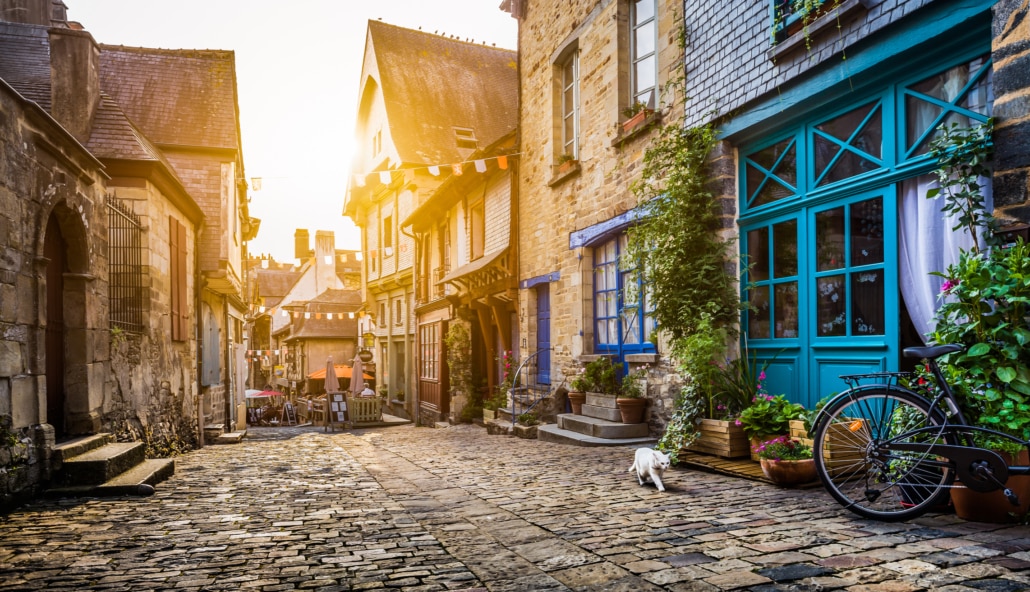
In fact, a certain Jewish gentleman, named Jacob, established England’s first coffee house in Oxford in 1650.
Nowadays, people commonly know the building better as The Grand Café.
London’s first coffee house opened shortly after, namely in 1652. A Greek man by the name of Pasqua Rosee managed it. And, 20 years later, the same man also opened the first coffee house in Paris.
When visiting a coffee house in December 1660, Samuel Pepys, a former Member of Parliament and Royal Society had following to say.
“He [his friend: Colonel Slingsby] and I in the evening to the Coffee House in Cornhill, the first time that ever I was there, and I found much pleasure in it, though the diversity of company and discourse.”
From this point on, our rich history of coffee only further accelerated.
-
‘The First Internet’
– 8 Fascinating Facts About The History of Coffee –
Sir Samuel Pepys was not the only person that felt somehow magically drawn into coffee houses.
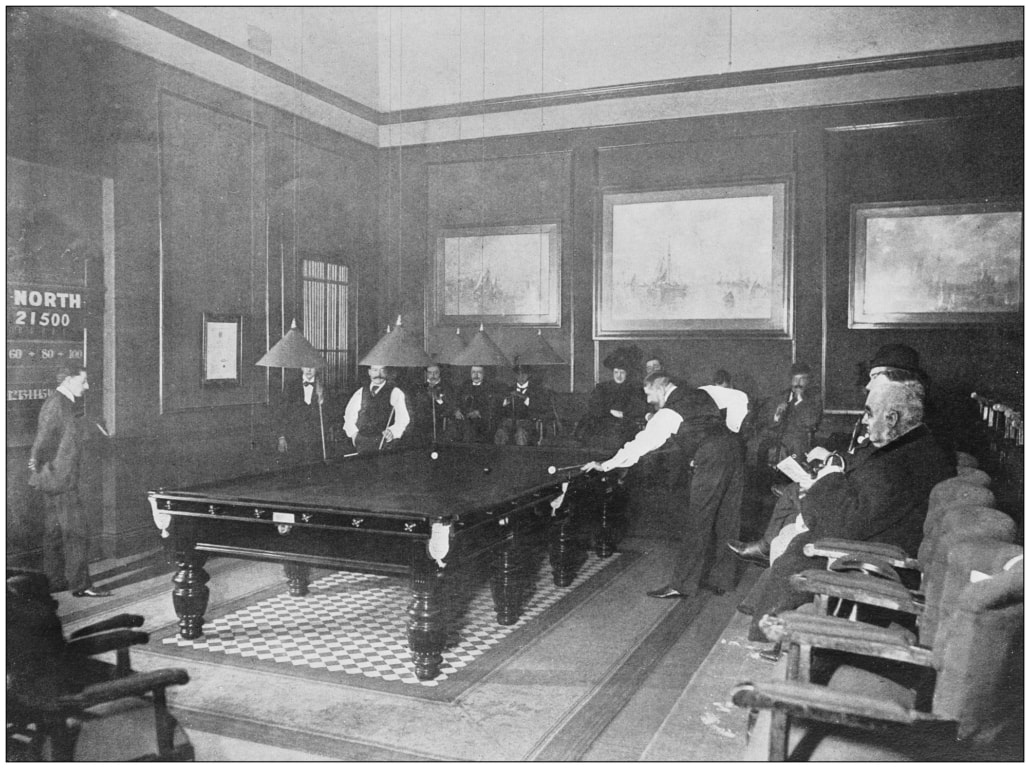
For many literate, aspiring and generally interested people, coffee houses became the new fast spreading centers of information. Entering a coffee house was like opening an interactive newspaper constantly updating itself.
Hence, one could say that coffee houses became the ‘internet’ of this period of our time.
You could literally discuss and educate yourself about any knowledgeable matter there, it seemed. Besides recent events, historical, political, philosophical, biological and religious topics were the most common ones.
For example, Samuel Pepys reports of news about the latest conflict with the Dutch. Or, the growing threat of the plague and potential remedies against it. Furthermore, he enjoyed discussing matters like about the Roman Empire. Or, what the difference is between being awake and dreaming. And, what kind of different species of insects are out there.
Fueled by empowering caffeine and comfortable settings, coffee houses even became a more central figure in people’s society.
So, it is not very much surprising that there were already 3.000 coffee houses in England alone by 1675. That’s just 25 years after the first coffee house opened.
Some places even offered bed and breakfast for overnight guests already.
Quite interestingly, many of these new establishments seemed to especially follow the Turkish coffee house models. Even their exotic names resembled these origins.
For instance, there were around 60 different ‘Turk’s Head’ coffee houses alone. Other popular coffee houses had names like ‘The Jerusalem Coffee-house’, ‘Blackamoor’, or ‘Ye Blackmore’s Head’. A few others were ‘The Oriental Cigar Divan’, ‘The Africa and Senegal Coffee-house’, ‘The Sultaness’, ‘The Sultan’s Head’, or ‘Solyman’s Coffee House’.
Just to name a few. And to give you a general idea.
-
Coffee and ‘Men’s Fertility’
Typically, all women were excluded from coffee houses.

Unless, they were maybe prostitutes. So, as you can imagine, a lot of women were not happy about this fact. They did not appreciate their exclusion. Hence, many women felt very strongly offended. So, they wanted to express their frustration and anger.
One of the better known spokeswomen was Mary Astell. And, she wrote following in ‘An Essay in Defence of the Female Sex’ in 1696.
“A coffee house habitue is someone who lodges at home, but he lives at the coffee-house. He converses more with newspapers, gazettes and votes, than with his shop-books, and his constant application to the publick takes him off all care for his private life. He is always settling the nation, yet cou’d never manage his own family.”
Mary Astell was just one of many upset women, who were left out. It even went so far, that there was the ‘The Women’s Petition Against Coffee’ in 1674.
Basically, a large number argued that their husbands were always absent from home. As a result, they neglected their domestic duties as a father, husband and financial provider. Their men were seemingly “turning Turk”.
And, all of this for “a little base, black, thick, nasty, bitter, stinking nauseous puddle of water”?
There was no doubt amongst women. Coffee “made men as unfruitful as the deserts whence that unhappy berry is said to be brought, so much so that the offspring of our mighty ancestors would dwindle into a succession of apes and pigmies”.
In addition, you could further read claims in the ‘Maiden’s Complaint Against Coffee’ pamphlet from 1663.
The New ‘Viagra’
However, most men had a much different opinion about this subject.
Furthermore, they also then expressed their own thoughts and findings in the ‘Men’s Answer to the Women’s Petition Against Coffee’.
On the contrary, coffee makes men very much energized and potent. Hence, the drink was the Viagra of the day. It made “the erection more vigorous, the ejaculation more full, add[ing] a spiritualascendency to the sperm”.
Who can really argue with that, right?
Luckily, both females and males can freely enter any coffee shop, nowadays. Both genders can happily enjoy any of the many great drink creations of coffee out there.
So, this former argument from the past finally seems to be settled now.
The Bottom Line – 8 Fascinating Facts About The History of Coffee
These are just a few, rather unique, examples of our rich history of coffee. There are many other fascinating episodes to read and learn about.
Maybe, what this article teaches us the most. Coffee had to overcome many obstacles. But, it prevailed and did so at any point of our history.
People just seemed to be enjoying this great energy-boosting drink too much. So, even if people tried, nobody was able to forbid it in the end.
In our modern days, coffee is an integral part of basically all societies around the world. And, our rich and colorful ‘coffee universe’ will only continue further growing from here.
And, on its path, there will probably be a lot of other upcoming and interesting stories. These will further add to our 8 fascinating facts about the history of coffee, which we shared in this article.
So, how about you?
Which story or episode interested you the most? What are maybe your thoughts on some of these 8 fascinating facts?
In your opinion, is there any other worth-knowing historical event? Should we maybe mention and include it as well?
What fascinates you the most about coffee and its history?
Feel free to share your thoughts and experiences with us.
Until then, stay safe, healthy and properly caffeinated.
Cheers!
Related Posts
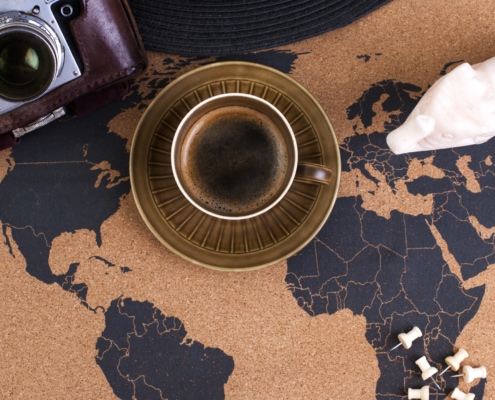
8 Fascinating Facts About The History of Coffee – ‘A Drink For The Devil’ –

What is Liberica Coffee – The World’s Rarest Coffee Type –
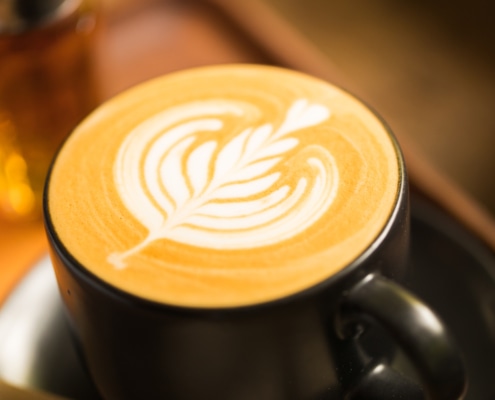
What is Latte Art – Its Fundamentals, History and Techniques –
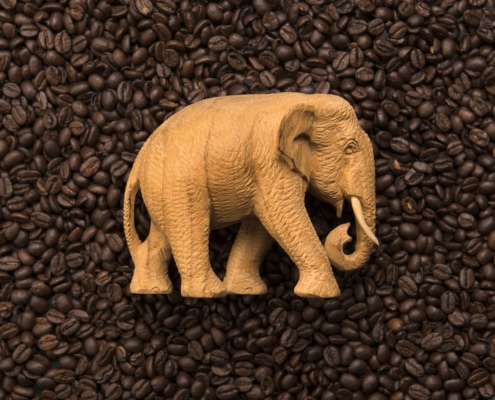
Elephant coffee – The new luxury coffee – How great is it?

What is Caffeine? – Is it Good or Bad for Your Health –
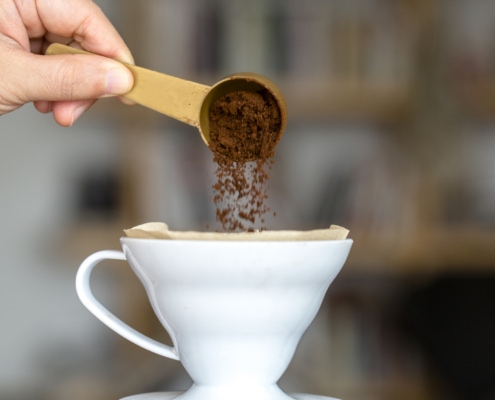
Filter Coffee and Instant Coffee – What’s the Difference? –

How Much Caffeine is in a Cup of Coffee – All You Need to Know –

Cappuccino and Latte – What’s The Difference –


